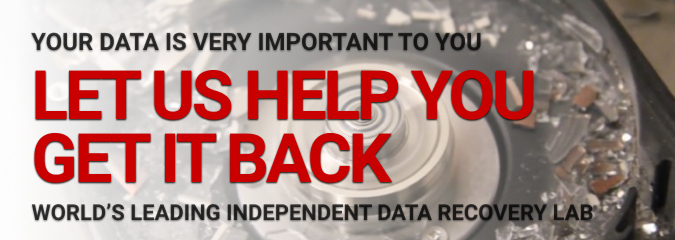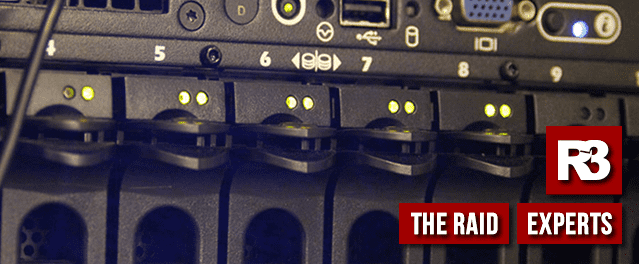
RAID Data Recovery Services
Updated on 10/29/2020If you need to recover data from a RAID array, then you have come to the best possible place. We specialize and invest heavily in RAID and Server Recovery skills, equipment and personnel. We are the top choice of IT professionals and System Administrators nationwide whether it is a small personal NAS storage unit or Custom Enterprise level systems with petabytes of data. We have you covered. Call (833) 503-1087 now for a free consultation with one of our RAID specialists!
Data Recovery Hospital’s mission is to make sure we maximize our clients’ chances of recovering their most important data, regardless of the cause of problem, or the type of media device involved.
For this reason, we have invested heavily in both the team that will be responsible for recovering your data, and the facilities they use to recover it. Our experienced RAID Recovery Team contains industry–leading experts across all of the specialized fields required in a world class data recovery lab, and our ISO3 clean room facilities are the envy of the majority of our competitors, who have to operate in lower spec facilities.
We understand that people looking to recover data from RAID arrays are likely to be extremely focused on getting their data back as quickly as possible. That is why we offer the following service:
- Talk to the engineer that will recover your data up-front before you proceed.
- An appropriately qualified server/RAID specialist will call you within 15 minutes of inquiry.*
- On-site data recovery is available if required.
- Turnaround times can be under 24 hours.
*During office hours (Monday to Friday) 8am-7pm or for emergencies call (833) 503-1087or email enquiries@r3datarecovery.net for out of hours emergency service.
Lost your data and need it back?
Dealing With Failed RAID Arrays
RAID servers are specifically designed to mitigate against the risk of data loss and this can often lead to an understandable, but sadly false sense of security. Any of the following can lead to a loss of data, which can be disastrous if the system or server in question is running critical services such as Exchange, SQL or virtual machines.
- Power surge (both from outside events or internally within the enclosure or rack)
- RAID partition(s) missing.
- Accidental deletion of data or reformatting.
- Multiple disk failure leading to loss of RAID volume.
- RAID enclosure failure.
- Stale and degraded members.
- Malfunctioning Controller.
- Failed rebuild or resync.
- Virus, encryption or Ransomware.
- RAID configuration settings lost.
Whatever, the issue, we can recover your data from all of the different RAID configurations. See below to find out more about RAID recovery for your specific set-up.
RAID 0, RAID 1 and RAID 5 recovery are not the only arrays that we can help restore. If your RAID level is different from one of the more standard types, please call us in order to hear how we can help provide a solution to your problem. See below for some of the additional types of RAID we have extensive experience with including Nested RAID systems which combines different levels of RAID:
- RAID 1E
- RAID 6
- RAID 10 (1+0)
- RAID 50
- RAID 60
We also have experience with proprietary RAID systems such (i.e. RAID X, Soft RAID etc.) No matter how many different offsets and parameters you have, we have the Specialists who can get the job done.
Note: If at all possible, further use of any RAID system should be avoided after a problem has been detected in order to prevent any further damage and data loss occurring before our experts get the opportunity to examine the system. Attempting internal IT or manufacturer diagnostics can cause further damage. Even in cases that this has already occurred or you have been told by a so called expert that it resulted in permanent data loss, do not fret and contact us immediately so we can prove them wrong!
RAID’s built-in fault tolerance functionality has an unfortunate tendency to instil users with a false sense of security. As a consequence, back-up are often out of date or non-existent and any failure can have disastrous consequences. Even if you believe only one disk has failed, it is very likely one of the remaining members is stale and you will not be able to restore ALL of your data yourself.
Recovering data in situations such as this is a particular specialty of Data Recovery Hospital and one we take great pride in. So please contact us immediately to find out more about how we might help you recover data from a failed RAID array.
If you are in a hurry please use our online diagnostics form or visit our contact page.
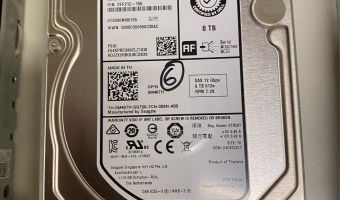
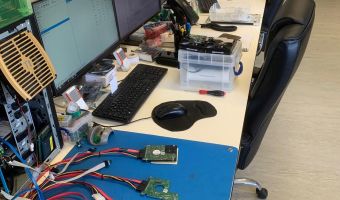
Common Causes Of RAID Failure
The most common causes of failure within RAID disks are as follows:
Failed RAID controller
Many RAID servers have a single controller that handles all of the array’s options. If it fails, this may stop the array from booting and can cause the logical quantity to disappear.
Multiple disk failure resulting in loss of RAID volume
Most RAID arrays are designed to cope with the failure of one hard disk outside of RAID 0. While waiting for a replacement however, the RAID array is running on degraded mode and the probability of the next drive failing and disabling the RAID volume is extremely high; particularly as all drives in the array are likely to be from a single batch and subject to the same amount of stress.
Power Surge
Power surges often lead to a failure of the RAID controller amongst many other issues which usually results is a total loss of data. They can also lead to corruption of the RAID configuration setting in the controller card.
Failed rebuild of RAID volume
If the correct procedures are not followed exactly when rebuilding a RAID volume, this can result in a wrong or partial rebuild or a complete system breakdown when the rebuild is completed.
Unplanned reconfiguration of RAID volume
This happens more often than you’d expect – with similar results to a failed rebuild.
RAID partition missing
Partition disks can occasionally become corrupt or go missing and cause whole partitions to disappear and/or become unusable losing functionality.
Server crash
When the host server crashes, it often makes the array inaccessible and snowballs into other issues.
In addition to the above RAID-specific issues, RAID arrays can suffer from many of the same data recovery issues as standard hard disks; e.g. logical problems, firmware issues and accidental deletion of data.
Malicious attack from an outside source
Unfortunately, we are seeing more Ransomware attacks than ever recently. Do not pay nor attempt to negotiate with your attacker prior to knowing all of your options and speaking with one of our Ransomware Specialists. It might seem like common sense not to trust a criminal who is trying to extort your data for ransom but desperation in these situations can result in snap decisions that have serious ramifications.
In addition to the above RAID-specific issues, RAID arrays can suffer from many of the same data recovery issues as standard hard disks; e.g. logical problems, firmware issues and accidental deletion of data.
Lost your data and need it back?
What To Do
Whatever the issue with your failed array, it’s crucial you engage a professionally trained RAID recovery engineer to restore your data as the wrong steps now could lead to an unnecessary permanent loss of your data. You should also:
- Turn your RAID array off immediately.
- Make notes of the events leading up to the failure.
- Contact one of our RAID Specialists here at Data Recovery Hospital immediately for advice and a solution.
Less Common Causes Of Failure Within RAID Servers
- Accidental replacement of good disk in RAID
- Loss of RAID system registry
- Loss of RAID server configuration settings
- RAID back-up unsuccessful
- Corrupt files in RAID array


RAID Data Recovery Process Explained
This section provides a top level overview of the process we follow to recover data from failed RAID arrays. If you have any further questions that have not been answered here, one of our data recovery engineers would be delighted to answer them by phone or email.
If you are currently unable to recover data from a failed RAID server, then please do get in touch as we have a dedicated RAID team just waiting for your call. Data Recovery Hospital treats all RAID recoveries as extremely high priority.
Top Level Data Restoration Process
At Data Recovery hospital, we have spent many years refining our 4-stage data recovery process to ensure we maximize customer satisfaction and data recovery rates:
- 1. Free consultation
- 2. Free evaluation
- 3. Data recovery
- 4. Return of data
You can read more about stages 1, 2 & 4 by viewing the data recovery process section. The rest of this page deals with data recovery itself; what steps would we take to restore your data?
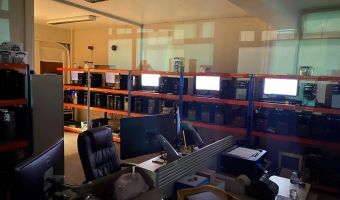
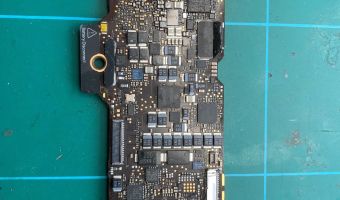
Recovering Data From Failed RAID Arrays
The first step is to establish whether or not the device is accessible to our market-leading laboratory facilities. If so, we will look to create an image of the accessible data onto new media, so that we can perform a logical analysis to understand the exact nature of the data loss problem.
If any files are inaccessible, our lab will exhaustively test each of the components to determine whether or not there has been any physical damage. Typical components that are often the cause of mechanical failure include read / write heads, electronics, drive motors, head assemblies and magnets.
In the event that any of the components have failed, or been damaged, we will replace them in our ISO 3 clean room (certified to be the cleanest in the country). We will then use specialist hardware and software to create a raw image of the data to be recovered.
If data has been lost due to a logical problem, our data recovery engineers will examine the low-level data sectors to establish the layout of volumes which are striped over more than one drive.
They will also work out the fixes that are needed to the filesystem structures, to enable access to the missing data.
We will ‘de-stripe’ multiple drive servers to enable filesystems to be repaired, so that the lost data files can be restored. In the event that the filesystem structures are missing or damaged to the point of being useless, we will look to extract the data directly from the destriped image.
Over time, our RAID Recovery Specialists have built a suite of custom tools and software that allow our engineers to analyze, repair and recover data from raw images on virtually any operating system.
When the data has been successfully recovered, we will provide a complete file list so that you are able to establish that we have been successful in restoring all lost files.
